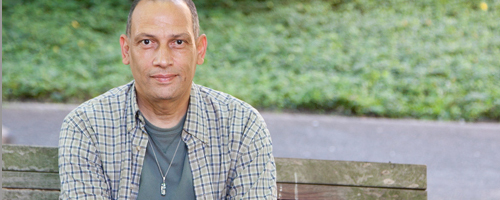A brave new online world of dueling icons
I was running The Miami Herald’s night city desk late oneevening maybe 20 years ago when a news assistant dropped on my deska photo from a traffic fatality. Some poor guy had stopped to helpa disabled car when another car hit him. In the foreground of thepicture was his shoe, which wasn’t empty.
Naturally, nobody considered putting that foot in the paper.Now, though, we’re about to tip into a new era, where theunparalleled abundance of communicating capacity will make anewspaper editor’s qualms an archaic irrelevancy. Atrocity isbecoming part of the vocabulary of news.
The great Internet transformation is still in its infancy.That’s why we talk about the growing might of the online universemainly in terms of the democratization of authorship, of all thesenew channels for words and ideas – the Internet as a vast extensionof the printed word.
And that’s true. Even if the Internet carried nothing more thanprint, it would pack a revolutionary punch. It undermines two ofthe monopolies on which professional news media have long basedtheir authority: exclusive access to sources and exclusive accessto audiences, as Tom Rosenstiel, director of the Project forExcellence in Journalism, recently reminded the Organization ofNews Ombudsmen in St. Petersburg, Fla.
The Internet gives civilians both. Witness the growingconstellation of blogs – free-lance information systems with news,feedback from communicants and links to authoritative sources.
But that’s still just the printed word. And as the recent floodof powerful images from the Middle East makes clear, words mayassert, but it’s pictures that compel. And it’s here that theInternet is starting to have its greatest impact.
U.S. abuse of Iraqi detainees at Abu Ghraib had been alleged formonths, but only when the pictures got loose did the world takenotice. “It is the photographs that give one the vivid realizationof what actually took place,” said Defense Secretary DonaldRumsfeld. “Words don’t do it. … You see the photographs, and youget a sense of it, and you cannot help but be outraged.”
Columnist Jonah Goldberg argues that Nicholas Berg was savagelymurdered on camera not in reprisal for the prison outrages but inresponse to the pictures of them. The Abu Ghraib abuses must havebeen widely known in Baghdad, Goldberg reasons. But once thepictures made the humiliation truly public, vengeance becameimperative.
That’s a persuasive argument, but to then blame the U.S. mediafor Berg’s murder entirely misses the point. It’s the totalirrelevance of traditional media that the affair exemplifies.Berg’s butchers didn’t need CBS or The New Yorker to rub theirnoses in the jailhouse rot; they had the Web. To bear witness totheir response, they again turned to the Web.
As disgusting as that episode is, the bigger story has anotherside. This technology can be an instrument of justice. A rivetingdocumentary now on the Sundance Channel, titled “Seeing IsBelieving,” examines the progressive potential of marryingstate-of-the-art visual tools to the Internet.
The film focuses on a Filipino activist who trained abeleaguered coalition of villagers on Mindanao to use handheldvideo cameras to document the murderous response of the localgentry to their attempts to defend traditional land claims. Theythen used the Internet to pressure authorities in Manila.
Mini-cams enable even the most disenfranchised to document theconditions they endure. The Internet then lets them upload theirstories and force the world to take notice.
And that’s a good thing. Just as it would have been good to havehad pictures from that Baghdad prison when Saddam Hussein ran it.Or to have posted photos from Buchenwald in 1940.
The real problems come if we now plunge into a world ofdiscourse that is even more superficial than news by sound bites,when conflict is waged with an eye – literally – to the images itwill spawn, when politics becomes spectacle and spectacle becomesdueling icons. The danger posed by iconic images – whether atoppling statue, an American led like a lamb to slaughter or anIraqi shackled and degraded – is that they may do no more thanreaffirm belief and reassure believers.
Discourse withers, and without words, pictures may say no morethan a shoe in a roadway.
Edward Wasserman is Knight professor of journalism ethics atWashington and Lee University.
Distributed by Knight Ridder/Tribune InformationServices.



